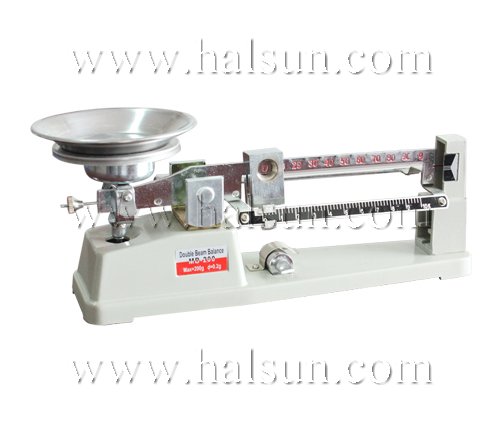
Double Beam Balance


 Quadruple Beam Balance Scale. For Laboratory and Educational Use
Quadruple Beam Balance Scale. For Laboratory and Educational Use
MB311 Quadruple Beam Balance
This scale has been around for many years. The quadruple beam design is very popular and is used extensively in schools and laboratories. This high quality balance is made with stainless steel and aluminum alloy. These balances are very durable and give better long term service than electronic scales of similar accuracy.
Made of high quality aluminum alloy and stainless steel. Convenient direct beam graduation.
The MB311 Single-pan balance is of unequal arm type with 4 beams.The maximum capacity is 311 grams and the readability is 0.01g .It is made of a high quality aluminium alloy ,the knife is made of a high quality alloy and the bearing plane is of agate ,with a stainless steel weighting pan and includes a buit in platform to aid density determination by weighting samples in air and in water .It is widely used for schools and educational establishments, etc.
Quadruple Beam Balance Scale for Laboratory and Educational Use
MB311 Quadruple Beam Balance Scale
Laboratory Mechanical Quadruple Beam Balance / Physical Balance / Mechanical Balance
Application:
1. The MB311 Single-pan balance is of unequal arm type with 4 beams.
2. The maximum capacity is 311 grams and the readability is 0.01g.
3. It is made of a high quality aluminium alloy, the knife is made of a high quality alloy and the bearing plane is of agate, with a stainless steel weighting pan and includes a buit in platform to aid density determination by weighting samples in air and in water.
4. It is widely used for schools and educational establishments, etc.
5. Adoption of agate knife edge bearing and specially-treated steel knife effectively improve the sensitivity of the balance.
6. Damping device reduces the oscillation frequency during working of the balance, tarring device facilitates weighing of bulk goods, with 210g/610g/310g riders, it facilitates users’ small amount weighing.
Main technical date:
1.Capacity: 311g
2.Sensitivity(g):0.01g
3Beam Calibrations
4.Front beam :1 x 0.01g
2nd beam: 10 x 1g
3rd beam: 100 x 10g
4th beam: 200 x 100g
5.Damping system: magnetic
6.Stainless Steel Weighing Pan: 100mm (4″)diameter
7.Density platform: 75mm (3″)diameter, adjustable height.
8.”2.92 x 3.15″ (7.42 x 8.01cm) heavy aluminum-look adhesive label on balance
9.Overall size (W x H x D): 370 x 300 x 137mm (14.5″ x 11.8″ x 5.4″).
A quadruple-beam balance is a handy laboratory tool to have when you need to weigh small items to a hundredth-gram precision. The beams are horizontal metal rails that hold sliding counterweights, starting with 100 grams and going down to a tenth-gram. The first beam is furthest back from the user; it holds the 100-gram mass, the second is closer, having the 10-gram, and so on. The tenth-gram beam is marked in .01-gram increments. An adjustable weighted screw on the left lets you precisely zero the scale. On the right is a tilting indicator. It’s vertically centered when the scale’s in balance, otherwise it’s over-or under-balanced.